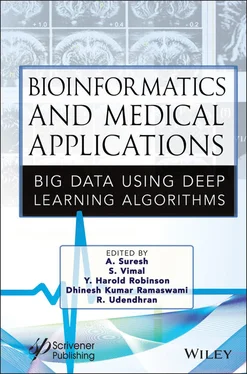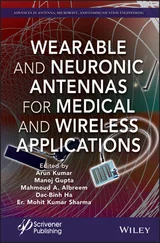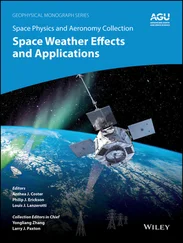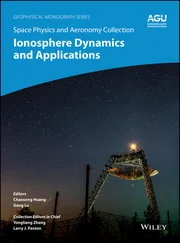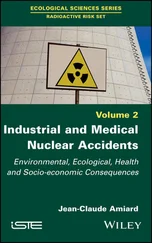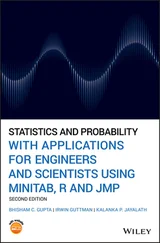Bioinformatics and Medical Applications
Здесь есть возможность читать онлайн «Bioinformatics and Medical Applications» — ознакомительный отрывок электронной книги совершенно бесплатно, а после прочтения отрывка купить полную версию. В некоторых случаях можно слушать аудио, скачать через торрент в формате fb2 и присутствует краткое содержание. Жанр: unrecognised, на английском языке. Описание произведения, (предисловие) а так же отзывы посетителей доступны на портале библиотеки ЛибКат.
- Название:Bioinformatics and Medical Applications
- Автор:
- Жанр:
- Год:неизвестен
- ISBN:нет данных
- Рейтинг книги:5 / 5. Голосов: 1
-
Избранное:Добавить в избранное
- Отзывы:
-
Ваша оценка:
- 100
- 1
- 2
- 3
- 4
- 5
Bioinformatics and Medical Applications: краткое содержание, описание и аннотация
Предлагаем к чтению аннотацию, описание, краткое содержание или предисловие (зависит от того, что написал сам автор книги «Bioinformatics and Medical Applications»). Если вы не нашли необходимую информацию о книге — напишите в комментариях, мы постараемся отыскать её.
The main topics addressed in this book are big data analytics problems in bioinformatics research such as microarray data analysis, sequence analysis, genomics-based analytics, disease network analysis, techniques for big data analytics, and health information technology.
Audience Bioinformatics and Medical Applications: Big Data Using Deep Learning Algorithms
Bioinformatics and Medical Applications — читать онлайн ознакомительный отрывок
Ниже представлен текст книги, разбитый по страницам. Система сохранения места последней прочитанной страницы, позволяет с удобством читать онлайн бесплатно книгу «Bioinformatics and Medical Applications», без необходимости каждый раз заново искать на чём Вы остановились. Поставьте закладку, и сможете в любой момент перейти на страницу, на которой закончили чтение.
Интервал:
Закладка:
Table of Contents
1 Cover
2 Title Page
3 Copyright
4 Preface
5 1 Probabilistic Optimization of Machine Learning Algorithms for Heart Disease Prediction 1.1 Introduction 1.2 Literature Review 1.3 Tools and Techniques 1.4 Proposed Method 1.5 Conclusion References
6 2 Cancerous Cells Detection in Lung Organs of Human Body: IoT-Based Healthcare 4.0 Approach 2.1 Introduction 2.2 Literature Review 2.3 Proposed Systems 2.4 Experimental Results and Analysis 2.5 Novelties 2.6 Future Scope, Limitations, and Possible Applications 2.7 Recommendations and Consideration 2.8 Conclusions References
7 3 Computational Predictors of the Predominant Protein Function: SARS-CoV-2 Case 3.1 Introduction 3.2 Human Coronavirus Types 3.3 The SARS-CoV-2 Pandemic Impact 3.4 Computational Predictors 3.6 Future Implications 3.7 Acknowledgments References
8 4 Deep Learning in Gait Abnormality Detection: Principles and Illustrations 4.1 Introduction 4.2 Background 4.3 Related Works 4.4 Methods 4.5 Conclusion and Future Work 4.6 Acknowledgments References
9 5 Broad Applications of Network Embeddings in Computational Biology, Genomics, Medicine, and Health 5.1 Introduction 5.2 Types of Biological Networks 5.3 Methodologies in Network Embedding 5.4 Attributed and Non-Attributed Network Embedding 5.5 Applications of Network Embedding in Computational Biology 5.6 Limitations of Network Embedding in Biology 5.7 Conclusion and Outlook References
10 6 Heart Disease Classification Using Regional Wall Thickness by Ensemble Classifier 6.1 Introduction 6.2 Related Study 6.3 Methodology 6.4 Implementation and Result Analysis 6.5 Conclusion References
11 7 Deep Learning for Medical Informatics and Public Health 7.1 Introduction 7.2 Deep Learning Techniques in Medical Informatics and Public Health 7.3 Applications of Deep Learning in Medical Informatics and Public Health 7.4 Open Issues Concerning DL in Medical Informatics and Public Health 7.5 Conclusion References
12 8 An Insight Into Human Pose Estimation and Its Applications 8.1 Foundations of Human Pose Estimation 8.2 Challenges to Human Pose Estimation 8.3 Analyzing the Dimensions 8.4 Standard Datasets for Human Pose Estimation 8.5 Deep Learning Revolutionizing Pose Estimation 8.6 Application of Human Pose Estimation in Medical Domains 8.7 Conclusion References
13 9 Brain Tumor Analysis Using Deep Learning: Sensor and IoT-Based Approach for Futuristic Healthcare 9.1 Introduction 9.2 Literature Survey 9.3 System Design and Methodology 9.4 Novelty in Our Work 9.5 Future Scope, Possible Applications, and Limitations 9.6 Recommendations and Consideration 9.7 Conclusions References
14 10 Study of Emission From Medicinal Woods to Curb Threats of Pollution and Diseases: Global Healthcare Paradigm Shift in 21st Century 10.1 Introduction 10.2 Literature Survey 10.3 The Methodology and Protocols Followed 10.4 Experimental Setup of an Experiment 10.5 Results and Discussions
15 11 An Economical Machine Learning Approach for Anomaly Detection in IoT Environment 11.1 Introduction 11.2 Literature Survey 11.3 Proposed Work 11.4 Analysis of the Work 11.5 Conclusion References
16 12 Indian Science of Yajna and Mantra to Cure Different Diseases: An Analysis Amidst Pandemic With a Simulated Approach 12.1 Introduction 12.2 Literature Survey 12.3 Methodology 12.4 Results and Discussion 12.5 Interpretations and Analysis 12.6 Novelty in Our Work 12.7 Recommendations 12.8 Future Scope and Possible Applications 12.9 Limitations 12.10 Conclusions 12.11 Acknowledgments References
17 13 Collection and Analysis of Big Data From Emerging Technologies in Healthcare 13.1 Introduction 13.2 Data Collection 13.3 Data Analysis 13.4 Research Trends 13.5 Conclusion References
18 14 A Complete Overview of Sign Language Recognition and Translation Systems 14.1 Introduction 14.2 Sign Language Recognition 14.3 Dataset Creation 14.4 Hardware Employed for Sign Language Recognition 14.5 Computer Vision–Based Sign Language Recognition and Translation Systems 14.6 Sign Language Translation System—A Brief Overview 14.7 Conclusion References
19 Index
20 End User License Agreement
List of Illustrations
1 Chapter 1 Figure 1.1 Heatmap of input attributes. Figure 1.2 Age distribution. Figure 1.3 Presence of cardiovascular disease. Figure 1.4 Cholesterol type distribution. Figure 1.5 Gender distribution. Figure 1.6 Random forest algorithm. Figure 1.7 Ensemble methods. Figure 1.8 NB confusion matrix. Figure 1.9 RF confusion matrix. Figure 1.10 DT confusion matrix. Figure 1.11 ROC curve analysis. Figure 1.12 Proposed architecture.
2 Chapter 2 Figure 2.1 Framework of the experimental study of lung cancer stratification. Figure 2.2 Sample images of correctly classified and misclassified carcinoma. Figure 2.3 More sample images of correctly classified and misclassified carcinom...
3 Chapter 3 Figure 3.1 Relative frequency distribution of proteins that express the four SAR... Figure 3.2 Zoom over the Figure 3.1. The X-axis represents the five polar intera... Figure 3.3 Histograms SARS-CoV-2 structural proteins.
4 Chapter 4 Figure 4.1 Cyclic nature of human gait (Vaughan et al . [9]).Figure 4.2 LSTM unit (Bouktif et al . [2]).Figure 4.3 Bidirectional LSTM (Yulita et al . [10]).
5 Chapter 5Figure 5.1 Network modeling approach that simplifies multi-omics data from the g...Figure 5.2 Classification of network embedding and algorithms used [17–47].Figure 5.3 Various network embedding tools and their applications [16].Figure 5.4 Taxonomy of biological network alignment.Figure 5.5 Illustration of data and methods used in analysis of Adverse Drug Rea...Figure 5.6 Illustration of data and methods used in multi-omics data analysis.
6 Chapter 6Figure 6.1 System architecture.Figure 6.2 Localization of heart.Figure 6.3 Outcome of segmentation.Figure 6.4 Feature extraction.Figure 6.5 Ensemble classification—Confusion matrix (using MLP).Figure 6.6 KNN classification—Confusion matrix.Figure 6.7 SVM classifier—Confusion matrix.Figure 6.8 XG Boost classifier—Confusion matrix.Figure 6.9 Logistic regression classifier—Confusion matrix.Figure 6.10 MLP classifier—Confusion matrix.Figure 6.11 Random forest classifier—Confusion matrix.Figure 6.12 Naïve Bayes classifier—Confusion matrix.
7 Chapter 7Figure 7.1 DL architecture [2].Figure 7.2 Autoencoders [36].Figure 7.3 Feedforward RNN [36].Figure 7.4 Long short-term memory (LSTM) [36].Figure 7.5 CNN architecture [36].Figure 7.6 Framework of CNN [36].Figure 7.7 Structure of BM [36].Figure 7.8 DBN architecture [36].
8 Chapter 8Figure 8.1 Different poses are illustrated in the figure with the detected key p...Figure 8.2 Image illustrating different body models [2].Figure 8.3 Challenges to human pose estimation [7].Figure 8.4 The figure illustrates 2D pose estimation extracted from an image and...Figure 8.5 The image illustrates multi-person pose estimation for different numb...Figure 8.6 Object annotated images from Pascal VOC Dataset.Figure 8.7 These images are from KTH Multi-view Football Dataset [18].Figure 8.8 MPII Human Pose Dataset with annotated body joints.Figure 8.9 BBC Pose Dataset with overlaid sign language interpreter.Figure 8.10 COCO Dataset with the object classes.Figure 8.11 Human3.6M Dataset.Figure 8.12 Image correspondence with DensePose.Figure 8.13 AMASS Dataset.Figure 8.14 Left: pose regression; Right: pose refinement.Figure 8.15 Overview of the cascaded architecture.Figure 8.16 Results from a convolutional pose machine.Figure 8.17 Iterative Error Feedback (IEF) mechanism for 2D human pose estimatio...Figure 8.18 Stacked hourglass module.Figure 8.19 Architecture for HRNet.Figure 8.20 Approaching 3D human pose estimation.Figure 8.21 Left: Results from DensePose-RCNN; Middle: DensePose COCO Dataset an...Figure 8.22 DensePose-R CNN model.Figure 8.23 Left: pose estimation without blanket; Right: pose estimation with o...Figure 8.24 Combined CNN-RNN model.
Читать дальшеИнтервал:
Закладка:
Похожие книги на «Bioinformatics and Medical Applications»
Представляем Вашему вниманию похожие книги на «Bioinformatics and Medical Applications» списком для выбора. Мы отобрали схожую по названию и смыслу литературу в надежде предоставить читателям больше вариантов отыскать новые, интересные, ещё непрочитанные произведения.
Обсуждение, отзывы о книге «Bioinformatics and Medical Applications» и просто собственные мнения читателей. Оставьте ваши комментарии, напишите, что Вы думаете о произведении, его смысле или главных героях. Укажите что конкретно понравилось, а что нет, и почему Вы так считаете.
